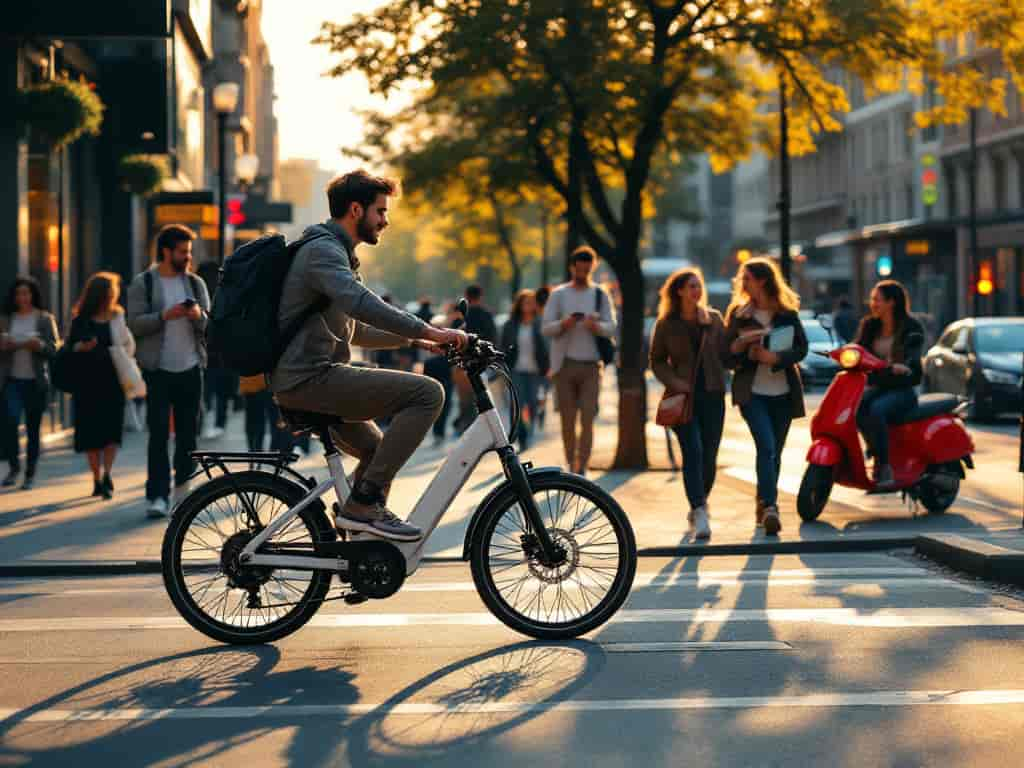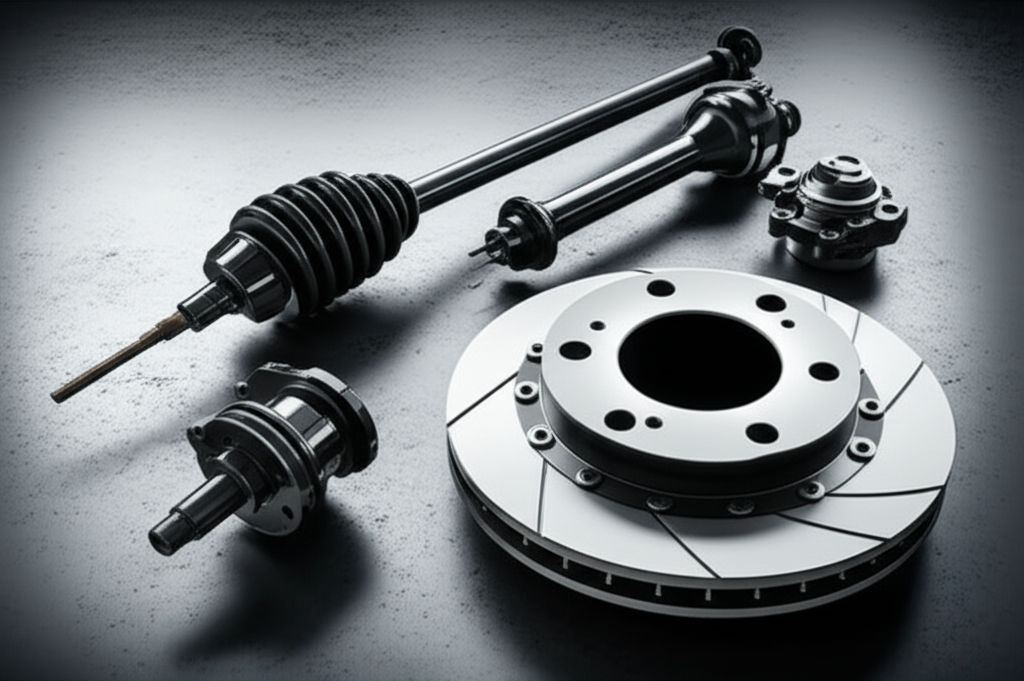Urban Mobility Trends: E-Bikes, Scooters & More
Ellie Moore

Photo: Urban Mobility Trends: E-Bikes, Scooters & More
Urban Mobility Trends: E-Bikes, Scooters & More
The future of urban transportation is evolving at a rapid pace. With cities becoming more crowded and sustainability taking center stage, alternative modes of transport have gained significant traction. Among these, e-bikes, electric scooters, and other micro-mobility solutions have emerged as front-runners in reshaping urban mobility. These innovations promise to not only reduce congestion and pollution but also provide efficient, cost-effective, and fun alternatives to traditional transportation.
In this article, we’ll explore the latest urban mobility trends, dive into the rise of electric bikes and scooters, and provide insights into the challenges and opportunities these trends present. By the end, you’ll have a clear understanding of where urban mobility is heading and how you can leverage these new trends to navigate the city of tomorrow.
The Rise of E-Bikes and Electric Scooters
What Makes E-Bikes and Scooters So Popular?
Urban mobility has seen a significant shift toward micro-mobility solutions like e-bikes and electric scooters. The global trend is fueled by several factors:
- Environmental Awareness: As more people become conscious of their carbon footprint, e-bikes and scooters are seen as eco-friendly alternatives to traditional gasoline-powered vehicles. These modes of transport produce zero emissions, reducing air pollution significantly.
- Convenience: Urban areas are notorious for traffic congestion. E-bikes and scooters offer a faster, more efficient way to navigate through crowded city streets. With the ability to bypass traffic jams and utilize bike lanes, they provide commuters with a time-saving solution.
- Cost-Effectiveness: Gas prices are constantly fluctuating, making daily commuting by car or public transport increasingly expensive. E-bikes and electric scooters, on the other hand, have low operational costs, making them an affordable option for many city dwellers.
- Last-Mile Connectivity: While public transport is effective for long distances, it often lacks convenience when it comes to covering the "last mile" between stops. E-bikes and scooters fill this gap, allowing users to travel from a bus or train station to their final destination without hassle.
The Growth of Shared Mobility Platforms
Shared mobility services, including bike-sharing and scooter-sharing programs, have skyrocketed in popularity. Companies like Lime, Bird, and Spin have revolutionized the way people move around cities by offering dockless e-scooters and e-bikes. These services allow users to rent a vehicle on-demand, eliminating the need for ownership and maintenance costs.
The flexibility of these services is a major selling point. Whether you need a quick ride to the grocery store or to avoid public transport delays, e-bikes and scooters are available at your fingertips through mobile apps.
Urban Mobility Trends Driving Change
Smart Cities and Infrastructure Adaptations
As the demand for e-bikes and scooters increases, cities are adapting their infrastructure to support these new modes of transport. Smart cities are integrating technology to enhance urban mobility and make commuting more efficient. Here’s how:
- Dedicated Bike Lanes: To ensure the safety of e-bike and scooter riders, many cities are investing in dedicated bike lanes and infrastructure improvements. This reduces the risk of accidents and encourages more people to adopt these eco-friendly modes of transport.
- Integration with Public Transport: In some cities, e-scooters and e-bikes are integrated with public transport networks. This seamless integration allows users to plan multi-modal commutes, combining train, bus, and micro-mobility options for a smoother, faster journey.
- Data-Driven Traffic Management: Smart cities are using data analytics to monitor traffic flow and adjust traffic signals in real-time. This ensures that e-bikes and scooters can move more efficiently, avoiding congestion and improving safety.
- Electric Charging Stations: The expansion of electric vehicle charging infrastructure is another crucial trend. E-bike and scooter riders can now find charging stations throughout urban areas, making it easier to maintain their vehicles for longer rides.
The Role of AI and Automation in Urban Mobility
The integration of artificial intelligence (AI) and machine learning is playing an increasingly important role in shaping urban mobility. Here are some ways AI is contributing to the evolution of e-mobility:
- Smart Routing: AI-powered apps help riders find the most efficient routes, taking into account factors such as traffic, weather conditions, and bike lane availability. This optimizes the overall commuting experience.
- Predictive Maintenance: AI is being used to predict when a bike or scooter needs maintenance, preventing breakdowns and ensuring that these vehicles are always ready for use.
- Autonomous Vehicles: Though still in its infancy, autonomous vehicles are poised to revolutionize urban mobility. Companies are experimenting with self-driving electric bikes and scooters, which could make urban transportation even more efficient.
The Benefits of Urban Mobility Trends
Reduced Traffic Congestion
Urban congestion is one of the biggest challenges facing modern cities. With more people opting for e-bikes and scooters, fewer cars are on the road, easing traffic flow. As a result, commutes are quicker, and the overall stress of navigating through congested streets is minimized.
Environmental Sustainability
The transportation sector is one of the largest contributors to greenhouse gas emissions. By switching to e-bikes and electric scooters, we can reduce the carbon footprint associated with commuting. In fact, studies have shown that replacing a car trip with an e-bike can reduce CO2 emissions by up to 90%.
Improved Health and Fitness
E-bikes, while electric-powered, still require pedaling, offering users a chance to engage in light exercise while commuting. This helps to improve cardiovascular health, muscle tone, and overall fitness. Electric scooters, while more passive, still promote outdoor activity and encourage users to spend less time sedentary.
Challenges in Urban Mobility: Barriers to Widespread Adoption
Safety Concerns
Despite their benefits, e-bikes and scooters are not without their challenges. Safety remains a primary concern. Accidents and injuries can occur, particularly in cities without sufficient infrastructure to support safe biking and scootering. Riders often face hazards like reckless drivers, potholes, and poor road conditions.
Regulatory Issues
Cities around the world are still working to figure out the best regulatory framework for micro-mobility vehicles. This includes issues related to speed limits, parking, helmet requirements, and insurance. Without clear and consistent regulations, the widespread adoption of these vehicles could be hindered.
Sustainability of Shared Mobility
While shared mobility services are growing, the long-term sustainability of these platforms remains uncertain. The environmental impact of manufacturing and maintaining shared bikes and scooters could outweigh the benefits if not properly managed. Additionally, maintaining fleet availability and minimizing theft and vandalism are significant operational challenges.
Future Outlook for Urban Mobility Trends
As urban populations continue to grow, the demand for more efficient and sustainable transportation solutions will only increase. E-bikes, electric scooters, and other micro-mobility innovations are well-positioned to play a crucial role in the future of transportation. However, success will depend on continued investment in infrastructure, smarter technologies, and stronger regulations.
What You Can Do
As a city dweller or commuter, embracing urban mobility trends is a step toward a more sustainable and efficient way of getting around. Here’s how you can get involved:
- Switch to E-Bikes or Scooters: If you haven’t already, consider adopting an e-bike or electric scooter for your daily commute.
- Advocate for Better Infrastructure: Support initiatives in your city that promote better biking lanes and safer transport options.
- Join Shared Mobility Programs: Take advantage of bike-sharing and scooter-sharing services to reduce your reliance on personal vehicles.
Conclusion: Embracing the Future of Urban Mobility
The urban mobility landscape is transforming, and the rise of e-bikes, electric scooters, and other micro-mobility options is at the heart of this revolution. These trends not only offer practical, cost-effective, and eco-friendly transportation solutions but also play a pivotal role in reducing urban congestion and improving quality of life. However, challenges such as safety, regulation, and sustainability must be addressed to ensure that these technologies thrive.
The future of urban transportation is bright, and embracing these innovations will help pave the way for smarter, greener cities.
FAQs:
- Are electric bikes and scooters safe? Safety depends on the rider and the infrastructure in place. Always wear a helmet, follow traffic rules, and use designated lanes where possible.
- Do I need a special license to ride an e-bike or scooter? In many cities, you do not need a special license to ride an e-bike or scooter. However, local laws may vary, so it’s always a good idea to check your city’s regulations.
- How long do electric scooters and bikes last? The lifespan of an electric scooter or bike depends on its battery and maintenance. On average, an electric bike can last for several years with proper care.
Finance & Investment
View All
March 22, 2025
The Basics of Stock Market Investing for BeginnersDiscover the essentials of stock market investing. Learn tips, strategies, and the fundamentals to start growing your wealth today. Click to learn more!
Ellie Moore

April 7, 2025
TD Auto Finance Customer Service HelpGo beyond keywords. Discover how expert SEO content, built on E-E-A-T and user needs, boosts rankings, traffic, and audience trust.
Ellie Moore

May 29, 2025
Yahoo Finance Market TrendsStand out online! Discover how expert SEO content, aligned with Google's E-E-A-T, drives trust, authority, and organic traffic for your business.
Ellie Moore

October 6, 2025
Boat Financing Rates and OffersMaster expert SEO content to unlock organic growth. Boost rankings, attract ideal customers, and build brand authority with valuable, trustworthy information.
Ellie Moore

May 6, 2025
TD Auto Finance Login GuideGo beyond keywords! Expert SEO content builds trust, boosts rankings, and drives conversions by delivering genuine value and demonstrating E-E-A-T.
Ellie Moore

September 16, 2025
Personal Finance Management TipsUnlock expert SEO content secrets! Drive organic traffic, rank higher, and build brand authority by creating valuable, user-focused content.
Ellie Moore
Insurance
View AllExplore how life insurance doubles as an investment tool. Learn about cash value policies and long-term financial benefits.
Ellie Moore
Make informed choices for your health! Compare plans and find the right coverage to protect your well-being.
Ellie Moore
Secure optimal insurance protection without overspending. Learn how policyholders and risk managers can get cheap, high-value coverage today.
Ellie Moore
Essential Travel Insurance Plans: Navigate coverage, costs, compliance, and tech. Secure your trip with insights for policyholders, agents, & risk managers.
Ellie Moore
Remote work brings new risks—find out what insurance coverage digital nomads and remote workers need in a changing world.
Ellie Moore
Discover how long-term care insurance supports future healthcare needs and offers financial stability for aging individuals.
Ellie Moore
Education
View AllUnschooling is redefining education. Learn how this self-directed approach works and why more families are embracing it as an alternative to traditional schooling.
Read MoreIs a college degree still worth it? Dive into a detailed analysis of the ROI on higher education, including costs, benefits, and future prospects.
Read MoreDiscover why liberal arts education remains valuable in today’s tech-driven world. Explore how it fosters critical thinking and adaptability.
Read MoreHow does social media affect learning and behavior? Uncover the positive and negative effects of social platforms on students today.
Read MoreMOOCs are transforming the landscape of higher education. Learn how massive open online courses are making learning accessible to all.
Read MoreArts education is key to fostering creativity. Learn why it’s important in schools and how it helps students develop essential life skills.
Read MorePopular Post 🔥
View All
1
2
3
4
5
6
7
8
9
10
Health






Automotive
View All
July 19, 2025
What You Should Know About Semi Automotive Parts
Demystify semi-automotive parts! Learn what they are & why they're crucial for your vehicle's safety, performance, and longevity. Essential guide for car owners...

August 25, 2025
KC Automotive Trusted Experts Near You
Seeking trusted auto repair in KC? Our guide connects you with reliable experts for safe, long-lasting car care & peace of mind.

July 25, 2025
Family Automotive Shops You Can Trust Today
Find a trustworthy auto mechanic! This guide helps you locate reliable car repair shops that prioritize honesty & customer relationships for peace of mind.

September 12, 2025
Jimmy's Automotive Friendly Fast Fixes
Jimmy's Automotive: Your guide to fast, friendly, and reliable car care. Get expert, transparent fixes & peace of mind to get back on the road.

February 15, 2025
Vehicle Recalls: What You Need to Know
Concerned about a vehicle recall? Learn what steps to take and how to stay informed about recalls affecting your car. Stay safe on the road!

July 10, 2025
Top Tips From Expert Automotive Locksmiths
Get expert tips from automotive locksmiths! Your ultimate guide to car key & lock security, covering lockouts, lost keys, and programming.

















